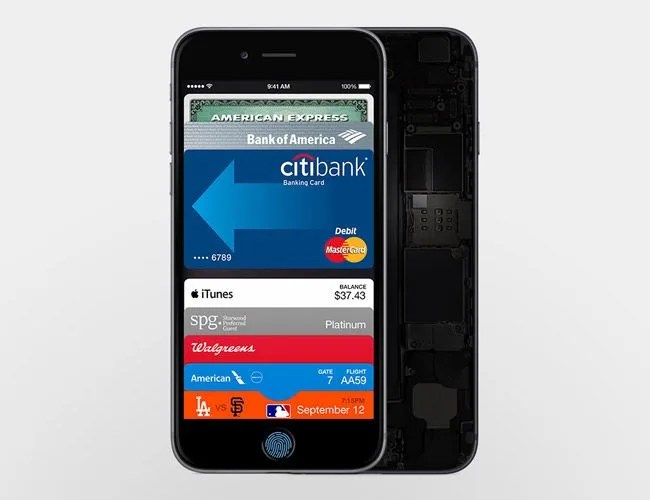☲☰CRYPTED
Editor’s Note: For most of us, the wide world of technology is a wormhole of dubious trends with a side of jargon soup. If it’s not a bombardment of startups and tech trends (minimum viable product, Big Data, billion dollar IPO!) then it’s unrelenting feature mongering (Smart Everything! Siri!). What’s a level-headed guy with a few bucks in his pocket supposed to do? We’ve got an answer, and it’s not a ⌘+Option+Esc. Welcome to Decrypted, a new weekly commentary about tech’s place in the real world. Writer Darren Murph, the former Managing Editor of Engadget and a Guinness World Record holder for number of blog posts published, will spend some weeks demystifying and others criticizing, but it’ll all be in plain english. So take off your headphones, settle in for something longer than 140 characters and prepare to wise up.
With the debut of the iPhone 6 (and 6 Plus) came a nugget so substantial that it deserved its own introduction: Apple Pay. Both of Apple’s newest phones are the first to feature an embedded NFC (near field communication) module, which has grown to be the de facto standard in connecting mobile devices with next-gen payment terminals. Think of it as a Bluetooth module, but for transmitting payment and account information in secure fashion. With this, Apple is not only admitting that it’s ready to join the mobile payment movement, but that it’s ready to define it.
When Apple ushered in the iPhone 5 in September of 2012, nearly every major rival flagship had a mobile payment solution embedded — and trumpeted it at every possible marketing opportunity. It was essentially a given that the iPhone 5 would also boast an NFC module as well as an Apple-branded mobile pay option. But then, it didn’t. In fact, both the iPhone 5c and iPhone 5s were launched in 2013 with nary a mention of paying on the go, but now it seems quite clear that Apple’s engineers weren’t spending the past 24 months with their heads in the sand.
Why Now?
Many assumed Apple was simply ignoring mobile payments entirely. The brand made it clear at this week’s keynote that it was just waiting until it had a sufficient quantity of partners in place before it made an announcement. You see, Apple realizes that a solution is nothing without an ecosystem. Indeed, this is the Achilles’ heel of every other failed mobile payment solution to date in the United States. Solving the technical aspect of replacing one’s wallet is drop-dead simple; any trained coder can figure out how to store 16-digit strings and expiration dates in digital form. The hard part is making sure that mobile payments are accepted as ubiquitously as magnetic-stripe cards are today.
The truth is that unless mobile payments are seen as “accepted everywhere,” people will continue to fall back on old habits: rummaging through their wallet, finding a card, swiping said card, signing a paper receipt. Apple managed to line up a staggering amount of partners, and while not every store in the U.S. will accept Apple Pay at launch, enough will that CEOs from coast to coast will have little option but to jump onboard. When you’ve got players such as McDonalds, Subway, Whole Foods, Macy’s, Bloomingdale’s, Walt Disney World Resort, Duane Reade, Sephora, Staples, and Walgreens onboard, it’s just a matter of time before everyone else makes the leap.
It took Apple to persuade record labels to loosen their grip and allow people to purchase singles for $0.99 over the Internet, and it took Apple to persuade major merchants to unify around a payment standard.

